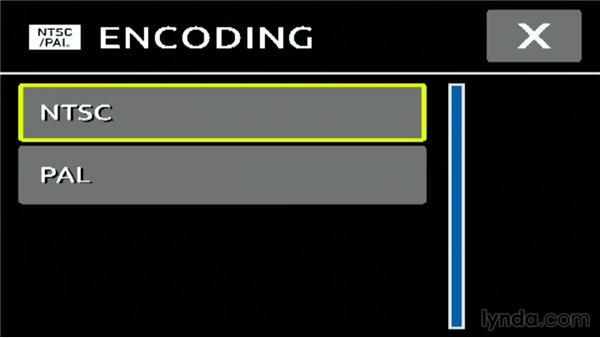
All GoPro cameras give you the ability to record video with two different standards. So we can choose whether to record GoPro NTSC or PAL videos. But what’s the difference? Which one to choose?
GoPro NTSC or PAL
The NTSC and PAL standards concern the number of frames that make up a second of video, and, consequently, the possibility of also doing TimeLapse. The basic consideration is that the human eye sees approximately 25 frames per second.
Assuming this point of reference, without going into excessive technicalities, we say that:
PAL
Phase Alternating Line is the standard in use in Europe and moves in multiples of 25. So for FullHD and Ultra HD, we will have:
4K 25/50 fps
1080p 25/50/100/200 fps
NTSC
National Television System (s) Committee, is the standard in use mainly in the United States and moves in multiples of 30. The only exception is framerate 24, used in cinemas. As for FullHD and Ultra HD, we will have:
4K 30/60 fps
1080p 24/30/60/120/240 fps
How to use GoPro NTSC and PAL standards
By accessing the GoPro menu> Preferences> Regional> Video Format, you can freely choose whether to take the standard you prefer. What you need to keep in mind is:
- The return on the fees (25/30, 50/60, 100/120, 200/240) is the same;
- Do not edit videos recorded with two different standards on the same timeline;
- NTSC and PAL follow the frequency of the current, so if you want to shoot indoors. For example, set 50 fps as 50 is the Hz of artificial light.
Differences between NTSC and PAL
The differences between NTSC and PAL are:
Frame rate per second: NTSC transmits at 30 fps (frames per second) while PAL transmits at 25 fps.
Resolution: PAL offers an image made up of 625 lines (576 in the field of view) and the NTSC system uses 525 (486 in view). For this reason, PAL offers higher resolution despite offering a lower frequency of images per second.
Let’s look at these differences in a little more depth.
1.- Frequency of images per second
The main difference is the frequency of images per second, NTSC 30 fps compared to 25 fps for the PAL format. Both formats also use a different number of lines per image and, as a result, give a different resolution. In today’s HD systems, this difference should no longer exist, but old broadcast methods still influence the reproduction of digital signals.
The differences between the two formats ultimately lie in the electricity used. For example, in Mexico, Canada and the United States, where the NTSC system is used, the electricity supplied has a frequency of 60 Hz (Hertz)
Therefore, the emitted signal will contain 60 fields per second, corresponding to 30 odd-numbered and 30 even-numbered fields of a screen (or 30 in-phase and 30 in non-phase).
Most analog television sets use an interlacing system for both types of fields. As a consequence of this interlacing, which is invisible to the human eye, 30 frames per second are obtained, or what are the same, 30 complete images per second.
In the countries where the PAL system has used the electricity used is at 50 Hz and as a result, the signal in PAL format reaches up to 25 alternating lines and will display 25 fps.
The PAL coding system was developed after the NTSC system and corrects some errors that it had, mainly in terms of color fidelity, in addition to having more resolution (more numbers of lines from the analog image and in digital images the PAL format has a resolution of 720 × 576 pixels compared to 720 × 480 of the NTSC format).
Read now: Can you see who views your facebook story?
2.- Differences in resolution
The resolution quality between the NTSC and PAL systems is another of the biggest differences between the two after the number of images per second.
PAL format images consist of 625 lines (576 in the field of view) and the NTSC system uses 525 (486 in view). For this reason, despite offering a lower number of images per second, the PAL system offers a higher resolution.
Analog to digital video conversion
The difference in resolution between PAL and NTSC formats affects their conversion into digital format. Digital NTSC videos have a resolution of 720 × 480 pixels and PAL videos are 720 × 576.
Having a lower resolution, NTSC video will have a smaller file size. It will require a lower compression ratio, which translates into less quality loss compared to the original video than videos in PAL format.
The HD digital video (High Definition) has a resolution of 1280 × 720 or 1920 × 1080 and digital HDTVs are capable of processing and displaying images with this resolution of both 50 and 60 Hz. In addition, televisions HD 1080p can display these resolutions also at 24 Hz.
